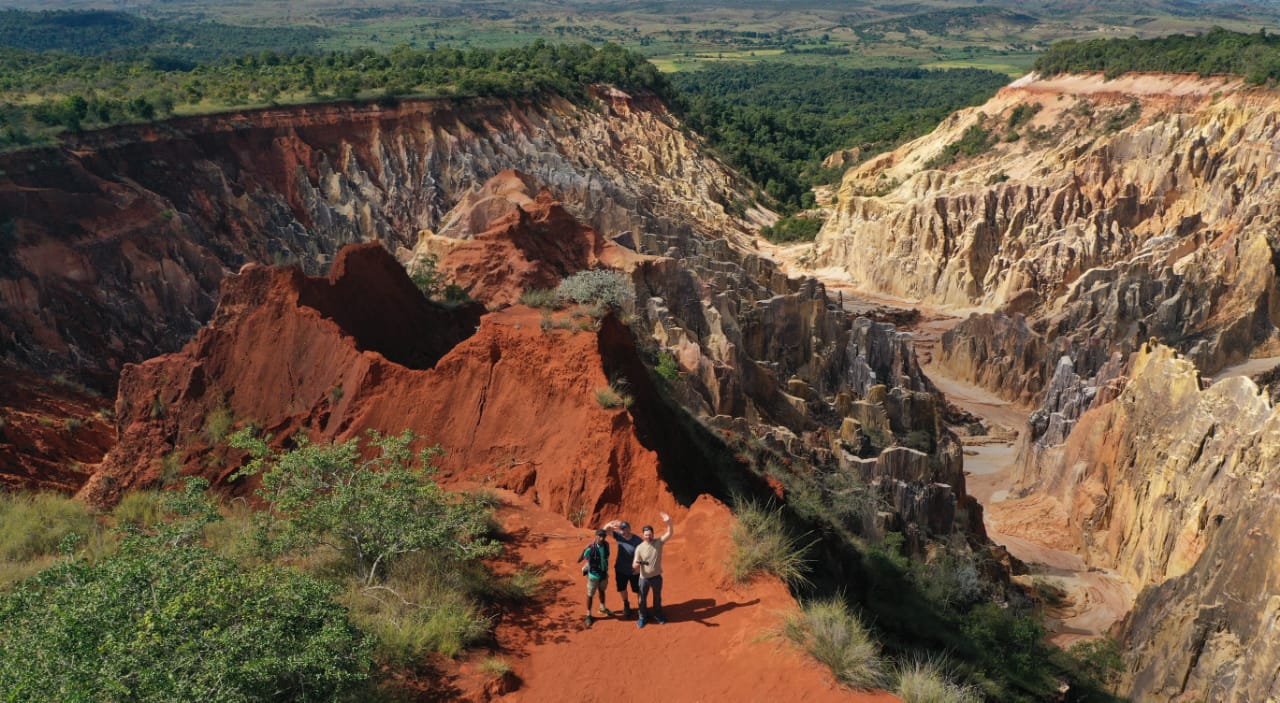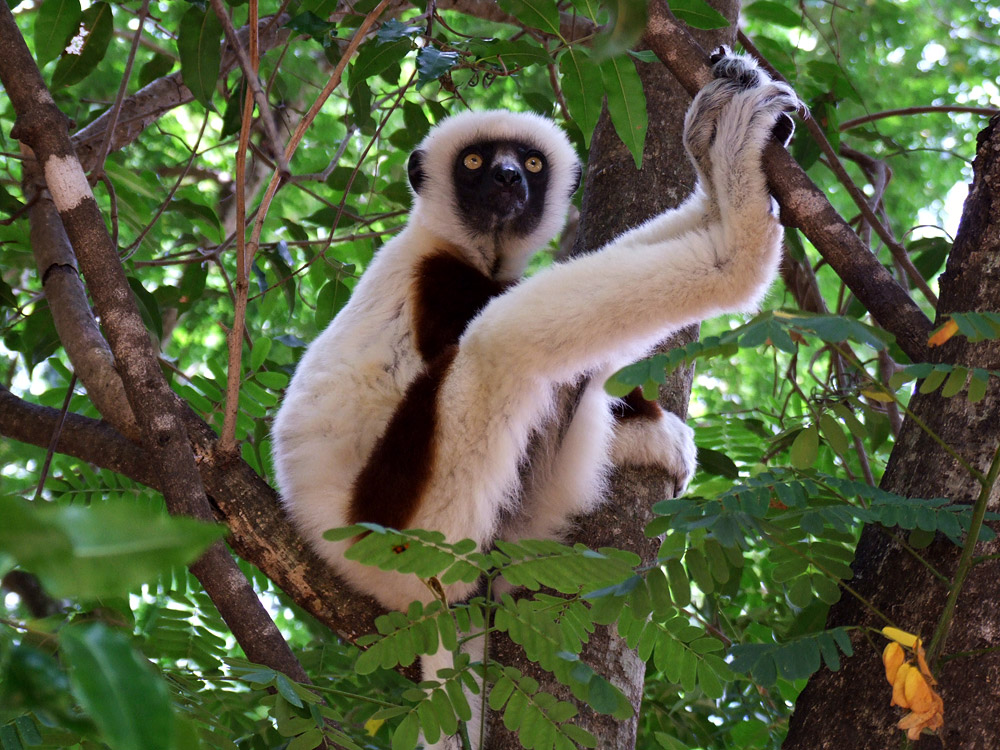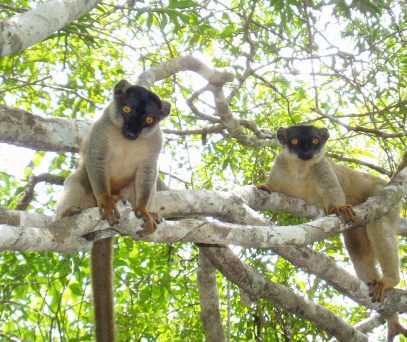
Ankarafantsika
On the plan
VISIT US
Depending on your means of transport :
- Ground Transportation
🚗 Direct access via the RN4
Take the RN4 from Antananarivo or Majunga - Maritime transport
🛳️ No maritime access
- Air transport
✈️ No flight connection
🗓️ When to visit Ankarafantsika ?
🌦️ All year round
The park is open all year round.🌺 Flowers & reptiles:
December to April – the ideal time to see flowers and easily spot reptiles.🦜 Birding:
August to November – for the best chance of seeing birds.🐒 Lemur watching:
June to November – the best time to spot these iconic primates.🌿 Activities available at Ankarafantsika
🥾 Hiking
🛶 Boat trips
⛺ Camping
🦜 Bird watching
👣 Guided tours
📚 School trips
🚶♂️ Nature excursions🏕️ Reception facilities
🏠 Visitor center: Located at the park entrance, it welcomes visitors upon arrival and provides them with information on how to organize their visit, find accommodation, eat, and prepare for their tours.
⛺ Camping site for researchers: 10 tent shelters with a space for cooking and eating, equipped with showers and toilets.
⛺ Camping site for tourists: 10 tent shelters with a cooking and dining area, equipped with showers and toilets
🦉 A stopover lodge with 6 rooms (3 doubles and 3 twins)
🏠Seven “comfort” bungalows with private bathrooms
🏠A restaurant called “Pygargue”: 225 m², seating 90, currently leased to a private operator
💰 Fees and rates
📄 Consult all rights and rates applicable to the reserve in the reference document below.
ℹ️ Essential information
To make the most of your visit, bring:
🥾 Appropriate clothing: hiking boots, light but covering clothing
🦟 Mosquito protection: repellent, cream, or mosquito spray
🔭 Binoculars: ideal for observing animals from a distance
💧 Useful accessories: water bottle, hat, sunglasses📜 Rules of conduct
🚫 No touching animals or purchasing forest products
🎫 Always bring a ticket with you on each visit
👨🏫 Guided tours with a certified guide are mandatory
The circuits
| Tours | Summary | Difficulty | Duration | Tour plans |
|---|---|---|---|---|
| CANYON (OBSERVATION) | panoramic view | Medium | 01 hours 30 minutes | |
| CANYON (DESCENTE) | panoramic view, canyon | Difficult | 2h | |
| COQUERELI | Lemurs, birds, reptiles, medicinal plants, precious woods, orchids | Average | 2h | |
| TOUR DU LAC | Cultural site, crocodile, waterfowl, fishing eagle, reptiles, lemurs, varied plant life, lakeside landscape | Average | 2h | |
| BAOBAB | Baobab | Easy | 1h | |
| PACHYPODIUM | Birds, reptiles, various plants, Pachypodium | Average | ||
| HAUT DU LAC | Birds, reptiles, various plants, view of the lake | Average | ||
| RETENDRIKA | Birds, reptiles, lemurs, various plants | Average | 2h | |
| BATEAU | Cultural site, crocodile, water birds, fishing eagle, Baobab, lakescape | Easy | 1h30 | |
| GRANDE BOUCLE : COQUERELI + CANYON (DESCENTE CANYON) | Lemurs, birds, reptiles, medicinal plants, precious woods, orchids, panoramic view, African savannah, canyon. | Difficult | 5h | |
| GRANDE BOUCLE : COQUERELI + CANYON (OBSERVATION CANYON) | Lemurs, birds, reptiles, medicinal plants, precious woods, orchids, panoramic view, African savannah, canyon. | Average | 4h | |
| SOURCE DE VIE : TOUR DU LAC + BAOBAB | Cultural site, crocodile, water birds, fishing eagle, reptiles, lemurs, varied plants, Baobab, lakeside landscape. | Average | 3h | |
| BOTANIQUE : RETENDRIKA + PACHYPODIUM | Birds, reptiles, lemurs, various plants, Pachypodium | Average | 4h | |
| POINT DE VUE : BAOBAB + HAUT DU LAC | Birds, reptiles, various plants, view of the lake. | Average | 3h |






